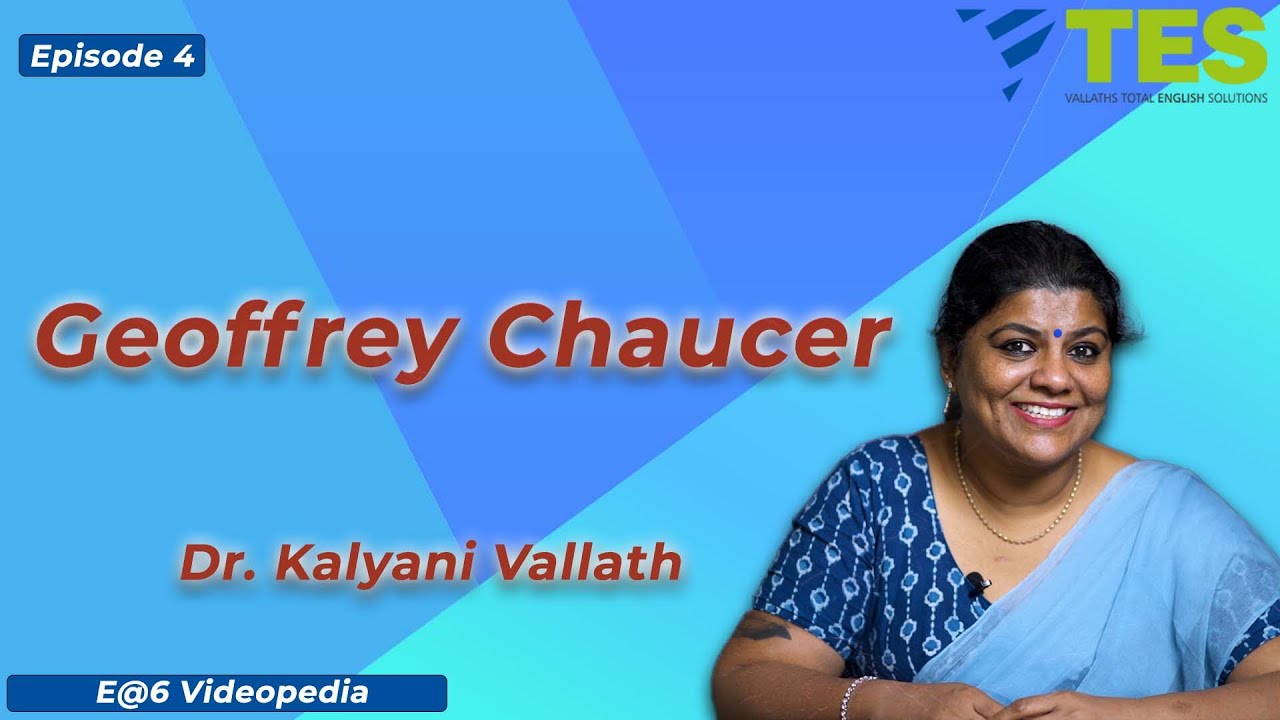Everything you need to know to read “The Canterbury Tales” - Iseult Gillespie
Summary
TLDRThe Canterbury Tales, a masterpiece by Geoffrey Chaucer, is a collection of 24 stories told by diverse characters on a pilgrimage to Canterbury. Written in Middle English, it blends humor and satire, offering a window into medieval society. The tales, ranging from romance to bawdy comedy, reflect the social hierarchy and are a testament to Chaucer's genius, leaving the reader to decide the best story.
Takeaways
- 📚 The script discusses 'The Canterbury Tales', a renowned piece of English literature by Geoffrey Chaucer.
- 🎭 It features a diverse cast of characters, each with their own story, reflecting various social classes of medieval society.
- 🗣️ The tales are written in Middle English, a language used between the 12th and 15th centuries, influenced by the Norman Conquest.
- 🏰 The characters embark on a pilgrimage to Canterbury to visit the shrine of St. Thomas Beckett.
- 🏨 They meet at the Tabard Inn in Southwark, where the host proposes a storytelling competition for the best tale.
- 👥 The script highlights the feudal system of medieval society, separating the clergy, nobility, and working classes.
- 🌍 Chaucer's own experiences as a government official and traveler likely influenced the global perspective in 'The Canterbury Tales'.
- 🖋️ Chaucer uses humor and satire to critique the worldviews and language quirks of his characters.
- 📈 The work provides a snapshot of medieval entertainment, with a mix of romance, comedy, and bawdy humor.
- 📖 'The Canterbury Tales' is unfinished, with 24 stories told by 29 pilgrims, leaving the reader to decide the best tale.
Q & A
Who is the main character in the story described in the transcript?
-The main character in the story described is not a single person but a collection of characters from 'The Canterbury Tales' by Geoffrey Chaucer.
What is the setting of 'The Canterbury Tales'?
-The setting of 'The Canterbury Tales' is a pilgrimage to Canterbury to visit the shrine of St. Thomas Beckett, starting from the Tabard Inn in Southwark.
What is the main theme of the story involving the Miller, the carpenter's wife, and the scholar?
-The main theme of the story involving the Miller, the carpenter's wife, and the scholar is trickery and deception used for romantic encounters, with elements of bawdy humor.
What are some of the tricks used by the scholar and the wife to get time alone together?
-The scholar and the wife use tricks such as feigning madness, staging a biblical flood, and exposing themselves in public to get time alone together.
Why does the parish clerk sing outside the wife's house every night?
-The parish clerk sings outside the wife's house every night because he is lusting after her.
What does the wife do to scare away the parish clerk?
-The wife tries to scare away the parish clerk by hanging her rear end out the window for him to kiss.
What is the scholar's response to the clerk's persistence?
-The scholar decides to try farting in the same position as the wife when the clerk is waiting with a red-hot poker.
What is the significance of Middle English in 'The Canterbury Tales'?
-Middle English is significant in 'The Canterbury Tales' because it was the language used between the 12th and 15th centuries, and the Tales are written in this form, reflecting the language of the time.
How does Chaucer use the characters' language to satirize their worldviews?
-Chaucer uses the quirks of the characters' language, such as the ribald humor of the Cook, the solemn prose of the Parson, and the lofty notions of the Squire, to satirize their worldviews.
What is the social commentary in 'The Canterbury Tales'?
-The social commentary in 'The Canterbury Tales' includes the satire of different social classes and their worldviews, as well as the exposure of human folly and vice across all levels of society.
Why might 'The Canterbury Tales' be considered unfinished?
-'The Canterbury Tales' might be considered unfinished because Chaucer introduces 29 pilgrims with the promise of four stories each, but the work ends without a clear winner or the completion of all the promised tales.
What is the role of the Innkeeper in 'The Canterbury Tales'?
-The Innkeeper in 'The Canterbury Tales' proposes a storytelling competition among the pilgrims, offering a free dinner to the one who tells the best tale, thus setting the stage for the Tales.
Outlines

Cette section est réservée aux utilisateurs payants. Améliorez votre compte pour accéder à cette section.
Améliorer maintenantMindmap

Cette section est réservée aux utilisateurs payants. Améliorez votre compte pour accéder à cette section.
Améliorer maintenantKeywords

Cette section est réservée aux utilisateurs payants. Améliorez votre compte pour accéder à cette section.
Améliorer maintenantHighlights

Cette section est réservée aux utilisateurs payants. Améliorez votre compte pour accéder à cette section.
Améliorer maintenantTranscripts

Cette section est réservée aux utilisateurs payants. Améliorez votre compte pour accéder à cette section.
Améliorer maintenantVoir Plus de Vidéos Connexes

The Canterbury Tales - General Prologue Video Summary

Canterbury Tales General Prologue By Geoffrey Chaucer in Hindi Summary

The Canterbury Tales | Summary & Analysis | Geoffrey Chaucer

October 23, 2025

The Canterbury Tales: General Prologue In Hindi by Geoffrey Chaucer

Geoffrey Chaucer | E@6 Videopedia | TES | Kalyani Vallath | NTA NET, K SET, G SET, WB SET, GATE
5.0 / 5 (0 votes)
